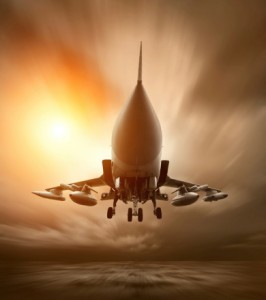 Forty years ago, the future of supersonic transport (SST) aircraft looked bright. In the 1960s and early 1970s, England, France, the Soviet Union, and the U.S. were excited to develop passenger planes that could cruise at speeds over Mach 1. Although the last commercial SST flight was 11 years ago, aerospace researchers today are exploring the feasibility of developing a new generation of SST aircraft.
Forty years ago, the future of supersonic transport (SST) aircraft looked bright. In the 1960s and early 1970s, England, France, the Soviet Union, and the U.S. were excited to develop passenger planes that could cruise at speeds over Mach 1. Although the last commercial SST flight was 11 years ago, aerospace researchers today are exploring the feasibility of developing a new generation of SST aircraft.
SST aircraft of the past
Despite the initial enthusiasm about SSTs, only one — the Anglo-French Concorde — had any commercial success. When the Concorde flew its first transatlantic flight from Washington D.C. to Paris’ Orly Airport in just 3 hours and 32 minutes in September 1973, people around the world cheered. Of course, the Concorde wasn’t the first commercial supersonic aircraft. That honor belongs to Tupolev Tu-144, which was built in the Soviet Union and nicknamed Concordeski. Its first flight was in December 1968, but it was quickly retired after it crashed at the 1973 Paris Air Show. Like Concordeski, Concorde also crashed once, in 2000.
Notwithstanding Concorde’s promising start, interest in supersonic air travel waned because of its high costs and low ticket demand, environmental and safety concerns, and strict aviation regulations that limited where SST aircraft could fly. Concorde flew its last flight in October 2003 and was retired.
SSTs — The next generation?
With the deck stacked heavily against SST technology, research and development ground to a halt for a number of years. However, interest in SST development is resurging, and companies like Boeing, Lockheed Martin, Aerion, Spike Aerospace, and university research teams are looking into supersonic again. At Aviation 2014, an annual event of the American Institute of Aeronautics and Astronautics, NASA presented its most recent work on new technology that may revive civilian supersonic travel within the next 15 years.
One problem that’s stalling supersonic technology is the need to reduce sonic booms — the shock waves caused by the aircraft flying at speeds faster than sound. Other barriers include high-altitude emissions, fuel efficiency, and public distaste for noise surrounding airports. Some of these issues are a matter for engineering teams, some a matter of public attitudes, and others require change to government regulations. Given these obstacles, it may still be a while before we’ll be able to cross the Atlantic in one hour.
Whether or not you agree that the world needs a new civilian SST aircraft, the idea certainly sparks some significant levels of excitement in the commercial and business aviation world. We’ll be keeping an eye on the prospects as they develop.
Contact L & L International if you need assistance in purchasing or selling a private jet.
You can reach our sales specialists today at sales@L-Lint.com, call us any time at +1.305.754.3313, or visit us online.